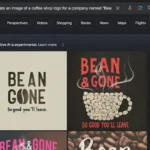Five Automotive Predictions At The Start Of 2024
If you like automotive, pop-culture, and annual predictions, you’ll find these five predictions based upon reputable sources both entertaining and insightful.
The crystal ball is always foggy, but maybe some of these predictions are a little clearer at the start of 2024. In the 1980 classic “Star Wars: Episode V – The Empire Strikes Back,” an anxious Luke Skywalker begs Yoda to foretell his companions’ fate, to which Yoda replies, “Difficult to see. Always in motion is the future.” Forty years later, that’s still true: the future pivots on unquantifiable, moving, independent variables. Nevertheless, here are a few 2024 predictions for the automotive industry based upon converging events, swellings of “similar-ish” predictions.
New Car Prices and Market Dynamics
New car prices will noticeably drop in 2024 driven by a few semi-related events, but will converge and result in supply-versus-demand curves as simple as Econ 201. Firstly, there will be a renewed vehicle supply on the backside of the chip shortage over the past few years. Cox Automotive predicts, “… new-vehicle inventory will approach pre-pandemic norms in 2024, reaching nearly 3 million units – three times the chip-shortage low – and days’ supply will remain at healthy levels.” Additionally, two non-automotive macrotrends will affect the demand side: expected declines in inflation globally — down to 5.2% in 2024, versus 8.7% in 2022 and 6.8% in 2023 — and decreases in interest rates (projected drop of 0.75% in the U.S.). These will combine to make vehicle purchases more affordable, and both OEMs and dealerships looking to move inventory will invent enticements on top of new, governmental incentives for electric vehicles (EVs), e.g., the U.S.’s $7,500 tax credit.
Technical Quality Issues in Vehicles
Tech-quality issues will rise in number given A) drastic measures taken for chip shortage issues (e.g., Ford, Mercedes, etc. parked tens-of-thousands of unfinished vehicles awaiting parts, and 53% of any retrofitting or repair services require multiple visits), B) significant reductions of engineering staff to support previous electric vehicle and autonomous investments (e.g., Stellantis recently offered buyouts to half of its salaried U.S. staff) which typically result in offshoring work, cutting rigor or both, and C) a simultaneous, exponential rise of in-vehicle software (e.g., an increase from 10M lines of code to an estimated 1B over 10-15 years. Per Warranty Weekly, 2023 has already witnessed an 11% rise in warranty costs versus 2022 with a quarter-over-quarter, upwards trend since Q3 of 2021. The cat-and-mouse game of global Cybersecurity will ramp-up in difficulty in 2024 and will likely get ahead of a few players.
Cybersecurity and Artificial Intelligence
Anyone who thought the last decade of escalating cyber-attacks on vehicles would be a linear trend for 2024 obviously missed how Artificial Intelligence (AI) will affect cybersecurity globally. “In 2024, cybersecurity will become even more engrained in the average person’s daily life,” said Michal Pechoucek, Chief Technology Officer at Gen. “Long gone are the days when cybersecurity issues were only for companies or the ‘most digital’ people … AI will play a huge role in how threats will be created, allowing criminals to create even more sophisticated and believable scams.” And given that 64% of the two hundred C-level executives surveyed already believe the automotive supply chain is currently vulnerable to a cyber-attack, AI will likely exploit something notable in 2024. To attempt to thwart this, the industry will consolidate computing networks into super-computers owned, monitored and maintained by the car manufacturers. Also starting in July of 2024, new regulations around the world (e.g., UNECE WP29 R156) will require far-reaching protections including ongoing Incident Response Teams and subsequent software updates. But most OEMs can be characterized as the “industrial incumbents of yesteryear” and have not yet learned to be the software factories of tomorrow.
Challenges Facing Electric Vehicle (EV) Startups
As the Wall Street Journal summed it up, “EV Startups Are Running Out of Cash.” Demand hasn’t nearly met expectations in multiple markets, and when anyone can amass a list of 69 EV start-ups to watch in 2024, that signals that some companies will file for bankruptcy. This is also true of autonomous brands (e.g., Cruise) that banked on oversold technology expectations for autonomy. Even mighty brands like Tesla have predicted “turbulent times” ahead, and companies like Lucid, Rivian, and Nikola have endured relentless murmurings about Chapter 11. All of this is fodder for the previously-predicted, post-COVID mergers and acquisitions and in all likelihood, there will be 2-3 household brands purchased in 2024. Previous alliance predictions by the investment bank Nord LB were “… Volkswagen with Ford, Toyota with various Japanese smaller automakers, Daimler with Geely or Renault, [and] General Motors and Honda.” Maybe the most interesting prediction was by Suzie Davidkhanian on The Daily: amazon will buy Hyundai in 2024-2025 since there’s already a sales partnership, technology-services commerce synergies and Hyundai’s brand alone is worth more than its market capitalization.
Market Growth and industry Prospects
Some prognosticators like Cox Automotive predict “weak growth” in the automotive industry in 2024, e.g., 2%. “The automotive industry will face another subdued year in 2024,” states The Economist Group. “[It will be] weighed down by slow consumer spending, high-interest rates, and disruption to supply chains due to geopolitical tensions.” But many of the aforementioned effects will amount to more spending and revenue throughout the automotive market and, according to Fortune Business Insights, will fuel the market via manufacturers that “… have taken the lead as they stay committed to introducing next-generation vehicles that feature cutting-edge technologies and premium-quality interiors.” Fortune predicts a compounded annual growth rate (CAGR) of 3.01% until 2031 globally with the North American market at 5.43% during the same period. Either way, I think we’ll all take a New Year’s prediction of growth given recent years of wallowing in the pandemic aftermath.
As Yoda also wisely grumbled in The Empire Strikes Back, “The greatest teacher, failure is. We [the teachers] are what they [the students] grow beyond.”
Source: forbes








No Comments